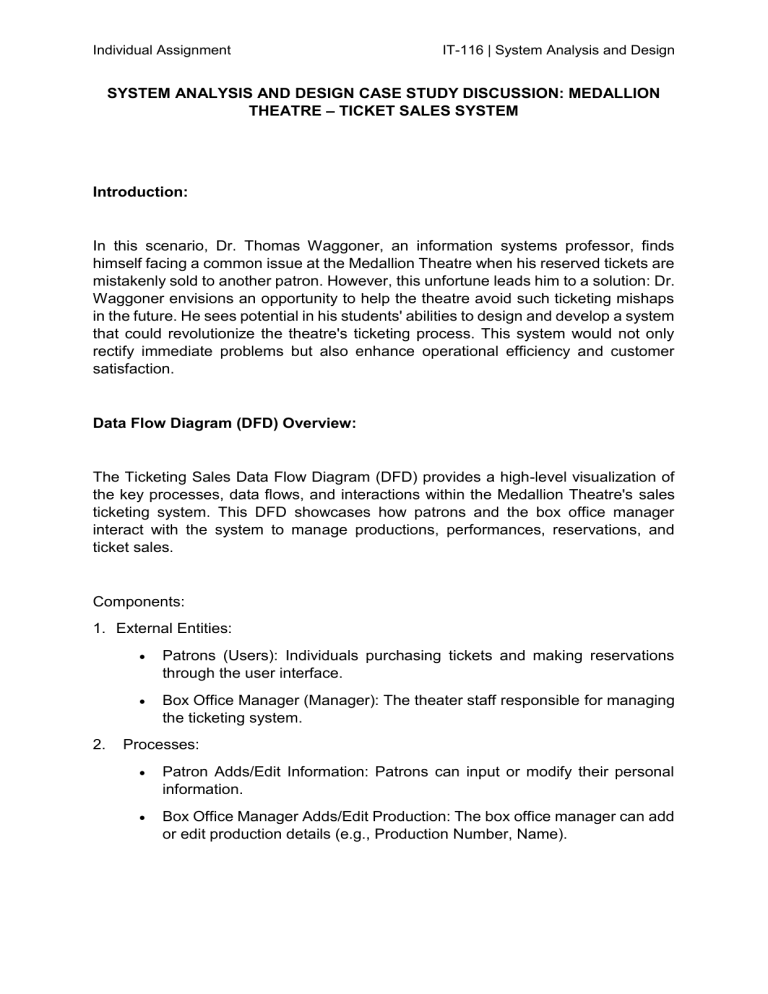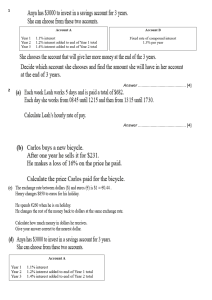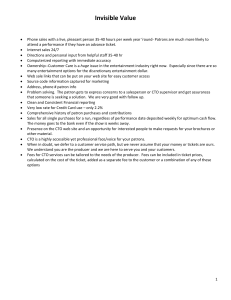
Individual Assignment IT-116 | System Analysis and Design SYSTEM ANALYSIS AND DESIGN CASE STUDY DISCUSSION: MEDALLION THEATRE – TICKET SALES SYSTEM Introduction: In this scenario, Dr. Thomas Waggoner, an information systems professor, finds himself facing a common issue at the Medallion Theatre when his reserved tickets are mistakenly sold to another patron. However, this unfortune leads him to a solution: Dr. Waggoner envisions an opportunity to help the theatre avoid such ticketing mishaps in the future. He sees potential in his students' abilities to design and develop a system that could revolutionize the theatre's ticketing process. This system would not only rectify immediate problems but also enhance operational efficiency and customer satisfaction. Data Flow Diagram (DFD) Overview: The Ticketing Sales Data Flow Diagram (DFD) provides a high-level visualization of the key processes, data flows, and interactions within the Medallion Theatre's sales ticketing system. This DFD showcases how patrons and the box office manager interact with the system to manage productions, performances, reservations, and ticket sales. Components: 1. External Entities: 2. Patrons (Users): Individuals purchasing tickets and making reservations through the user interface. Box Office Manager (Manager): The theater staff responsible for managing the ticketing system. Processes: Patron Adds/Edit Information: Patrons can input or modify their personal information. Box Office Manager Adds/Edit Production: The box office manager can add or edit production details (e.g., Production Number, Name). Individual Assignment IT-116 | System Analysis and Design Box Office Manager Adds/Edit Performance: The manager can add or edit performance details. Box Office Manager Adds/Edit Seats: The manager can manage seat information. Patron Reserves Tickets: Patrons select and reserve tickets for specific performances. Ticket Reservation Processing: The system processes and confirms ticket reservations. Patron Makes Ticket Payment: Patrons provide payment information for reserved tickets. Generate Ticket Sales Report: The box office manager generates sales reports. Box Office Manager Retrieves Reservation Data: The manager retrieves reservation data. 3. Data Stores: Patron Information Database: Stores and retrieves patron details. Production Database: Contains production-related information, including Production Numbers and Names. Performance Database: Stores performance details. Seat Database: Contains seat information, including seat numbers and prices. Reservation Database: Stores reservation details. Financial Database: Manages payment-related data. Report Repository: Stores generated ticket sales reports. Data Flows and Stores To explain the data flow in a ticketing system where patrons can add or edit their information and the box office manager can add or edit production details, performances, seats, and generate ticket sales reports, we can break down the data flow into several key processes and entities. This involves interactions between patrons and the system, as well as the box office manager's responsibilities. Below is an overview of the data flow based on the use case diagram provided: 1. Patron Adds/Edit Information (User Interaction): Individual Assignment IT-116 | System Analysis and Design Patron enters or updates their information through a user interface. This interaction can involve ticket booking, buying and other transactions efficiently. Afterwards, the patron data is sent to the database. 2. Box Office Manager Adds/Edit Production (Manager Interaction): The Box Office Manager adds or updates the productions hosted by the theater and it is reflected in the patron’s side of the system for viewing. 3. Box Office Manager Adds/Edit Performance (Manager Interaction): Similar to production management, all performance to be conducted in the theater are stored in the system. This includes the performance number, date, time, and production. Each performance can be referenced with its respective production in the system. 4. Box Office Manager Adds/Edit Seats (Manager Interaction): The manager also is the one responsible for determining seat availability for patrons by their number and seat category number. 5. Patron Reserves Tickets (User Interaction): After viewing the performances displayed in the system by the manager, the patron can then reserve for tickets with their desired seats. The details can be stored in the designated table for ‘Reservation’ in the database. 6. Ticket Reservation Processing: The ticket reservation details provided by the patron is due for processing, the system can accommodate for any conflict in schedule and seating thus, avoiding the inconveniences Dr. Waggoner and his wife faced. Once the availability of the seats and ticket for reservation is ensured, the system will then notify the patron for the confirmation. 7. Patron Makes Ticket Payment (User Interaction): Patron can then proceed to pay for the tickets via online or complete the reservation personally. The transaction details in stored in the database. 8. Generate Ticket Sales Report (Manager Interaction): Individual Assignment IT-116 | System Analysis and Design Generating the ticket sales report is done by the Box Office manager with data taken from the patrons’ tickets sold. 9. Box Office Manager Retrieves Reservation Data (Manager Interaction): Reservations can be retrieved from the database for reviewing and can be updated by the manager. This data flow represents the dynamic interaction between patrons, the box office manager, and the ticketing system. It highlights actions such as adding or editing personal information, managing production and performance details, reserving tickets, making payments, and generating reports. All these actions are given to provide a seamless ticketing experience for patrons while enabling efficient management for the box office staff. The core of this system is a robust database that stores and retrieves data for various processes, ensuring accurate and timely ticketing operations. Practical Implications The practical implications of implementing a ticket sales system for a theater encompass a range of considerations that affect both the theater's operations and its interactions with patrons. This system is expected to enhance operational efficiency by streamlining ticket sales processes and reducing errors. Patrons will benefit from the convenience of online ticket purchases, seat selection, and accessibility features, contributing to an improved user experience. Data management plays an important role, enabling the collection of patron data for customer insights, while simultaneously necessitating data security measures to protect sensitive information. Revenue management is another critical aspect, allowing for dynamic pricing and inventory optimization. Legal compliance, scalability, and reliability considerations ensure that the system adheres to regulations, remains adaptable to growth, and maintains high availability during peak periods. Reporting and analytics tools provide valuable insights, and integration with other systems streamlines overall operations. Customer satisfaction is at the core, driven by patron convenience, feedback mechanisms, and exceptional service. Ultimately, understanding and addressing these practical implications are key to the system's successful implementation, ensuring a seamless ticketing experience while maximizing revenue and compliance.

